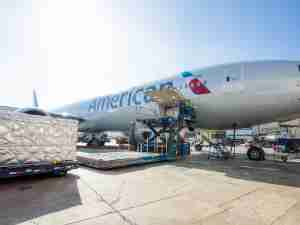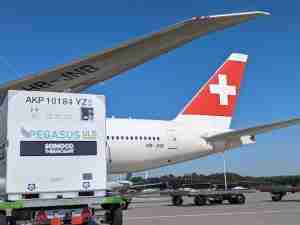Airfreight volumes will triple by 2025 over 2005 levels. That is the major conclusion in a forecast recently released by Airports Council International.
'In 2005 freight was estimated at roughly 76 million tons,' the report from the Geneva-based industry group noted, 'and this number is expected to almost triple to reach about 214 million tons by 2025 at an average growth of 5.4% annually over the next 20 years.'
Experts agree the forecast is reasonable. They differ on whether capacity and infrastructure will grow sufficiently to handle the projected airfreight surge.
The Boeing Company also issues an authoritative forecast for air cargo, pointed out Satish Jindel, a Pittsburgh-based transportation consultant. 'The Boeing forecast projected growth in the global air cargo market at a compounded rate of 6.1% over the next 20 years,' he said. 'Boeing tends to err on the high side. If you discount the Boeing number by 10%, you get the ACI figure.'
ACI's numbers also look 'sensible' to Erik Britton, an economist and manager of the Philadelphia office of Oxford Economics. 'It is a little more than what we have been projecting for global Gross Domestic Product growth,' he said. Growth in international trade, in other words, is likely to outstrip GDP growth.
'A little conservative, but still robust,' is how Mike Maynard characterized the ACI projection. Maynard is a senior project manager for air cargo evaluations at Wilbur Smith Associates, a transportation and infrastructure consultancy headquartered in Columbia, SC.
Passenger airlines are increasingly chasing cargo business, particularly on international flights, according to Maynard. 'International flights more often fly widebody jets,' he said. 'Air containers are easily loaded and unloaded off those aircraft. Half of the world's air cargo is transported in the belly of wide-body passenger aircraft. Passenger carriers used to view air cargo as gravy. Now it is part of their business plans.'
US airlines derive five percent of their revenue from cargo, according to Maynard. That figure climbs to 15% in Europe and as much as 30% among Asian carriers. Non-US passenger carriers, he pointed out, also fly their own fleets of cargo aircraft. Only one US carrier, Northwest, does the same.
The ACI study indicated that air cargo in the Asia/Pacific region will grow fastest, averaging 6.5% yearly growth. Middle East oil revenues should drive continued air cargo growth in that region while North America, 'a mature market,' is likely to grow slower than the others, at 4.4% annually.
Maynard agreed that Asia is the top air cargo growth area but sees other growth opportunities as well. 'China is driving a lot of growth as it becomes the world's factory floor,' he said. 'India has crept under the radar as far as manufacturing with more high tech oriented production.'
Cell phones, jewelry, and wristwatches made in India are 'lightweight, high-value products easily transported by air,' Maynard added. 'The problem is that the roadway network in India is so poor that getting to the airport is difficult. Some manufacturers are locating facilitate close to airports to cut down on driving time.' Maynard also sees strong growth in air cargo in markets, such as Africa and Latin America, that deal in perishable cargoes such as cut flowers, fruits and vegetables, and fish.
Larger aircraft with higher load factors
According to ACI, 'Aircraft movements will grow by an average of just 2.8%, which indicates a trend towards larger aircraft with higher load factors.' Jindel sees investments in larger aircraft already taking place, particularly among parcel carriers such as FedEx, UPS, and DHL. Maynard said some aircraft manufacturers are converting airplanes from passenger to freighter by outfitting them with larger doors and reinforcing decks with stronger flooring.
The United States has some excess infrastructure that could be put to use for air cargo, according to Maynard. Industry consolidation has led to the










